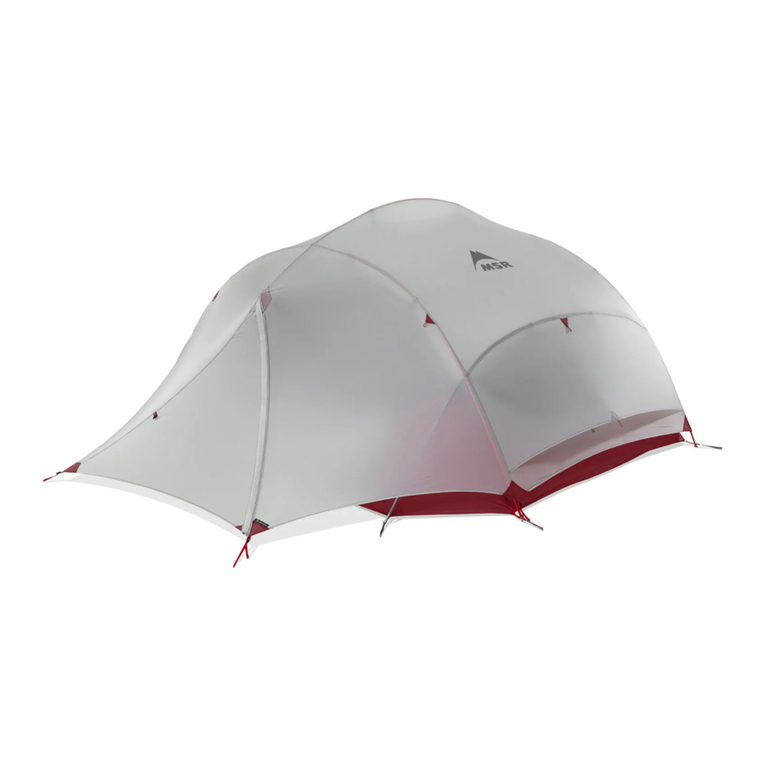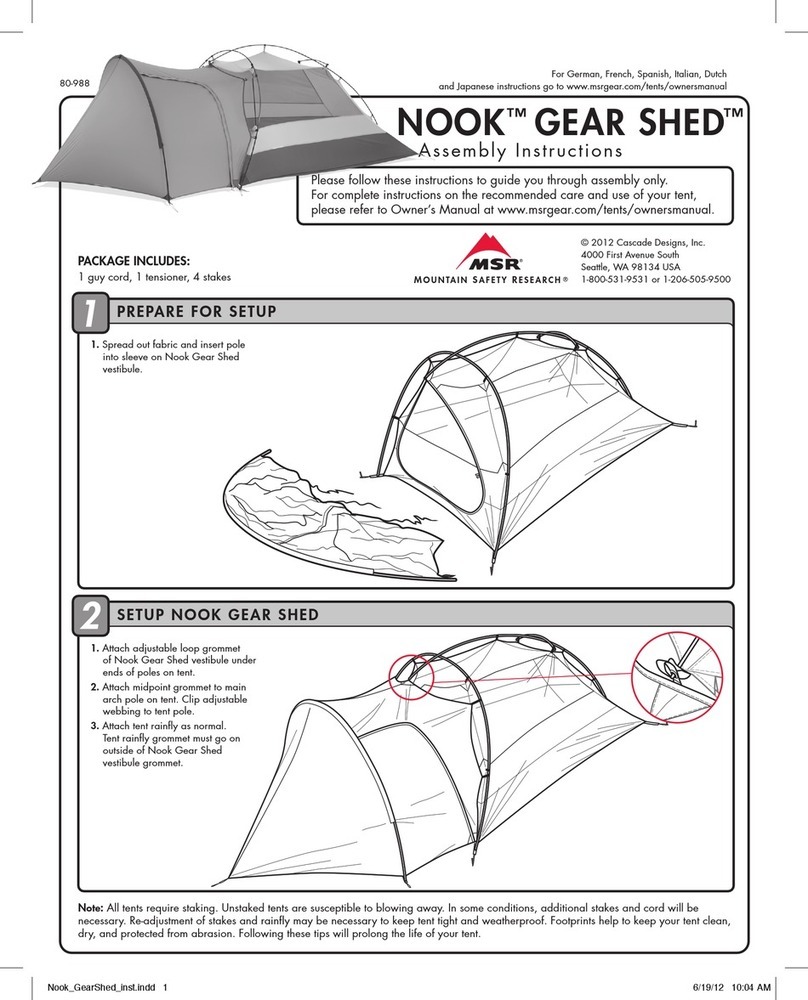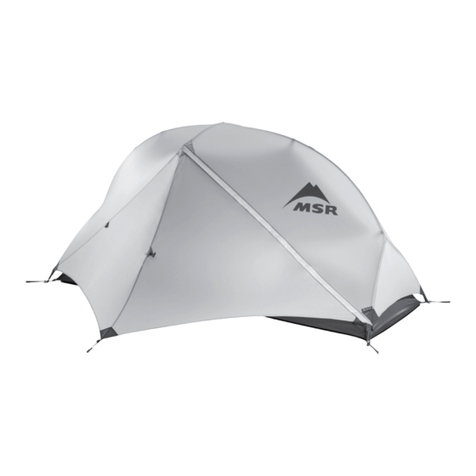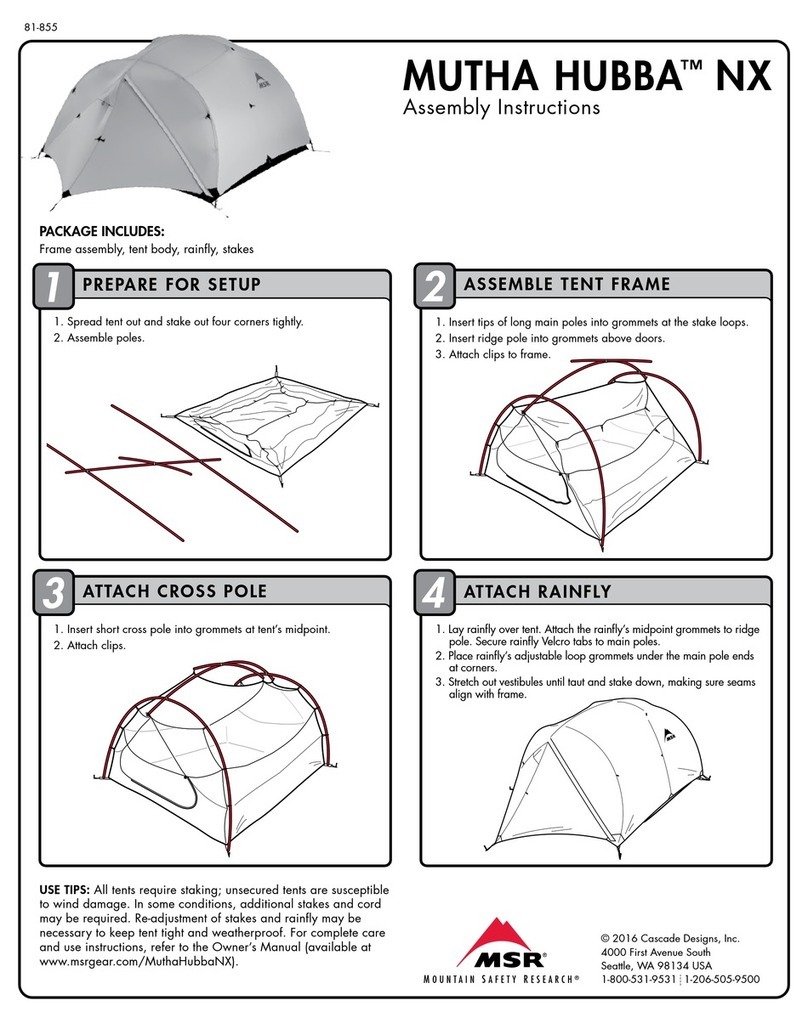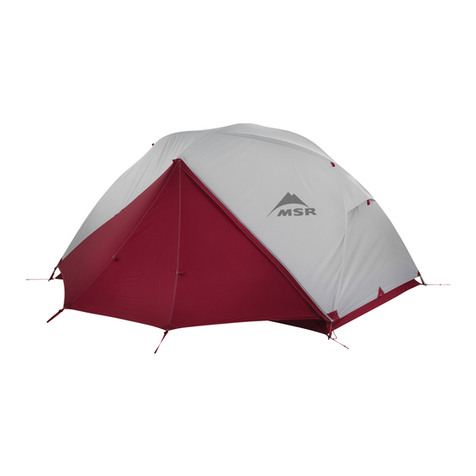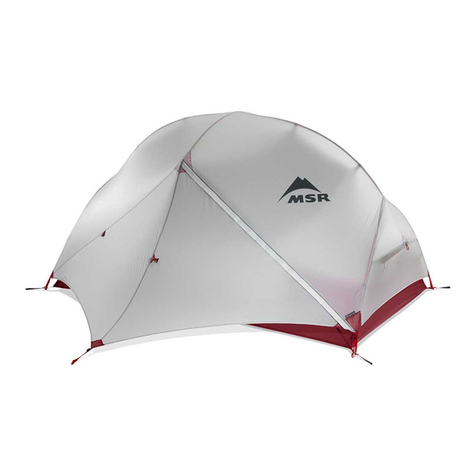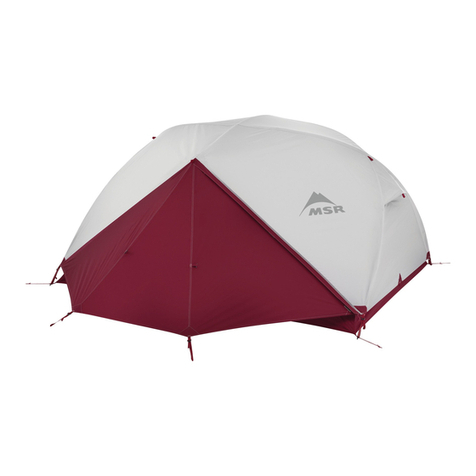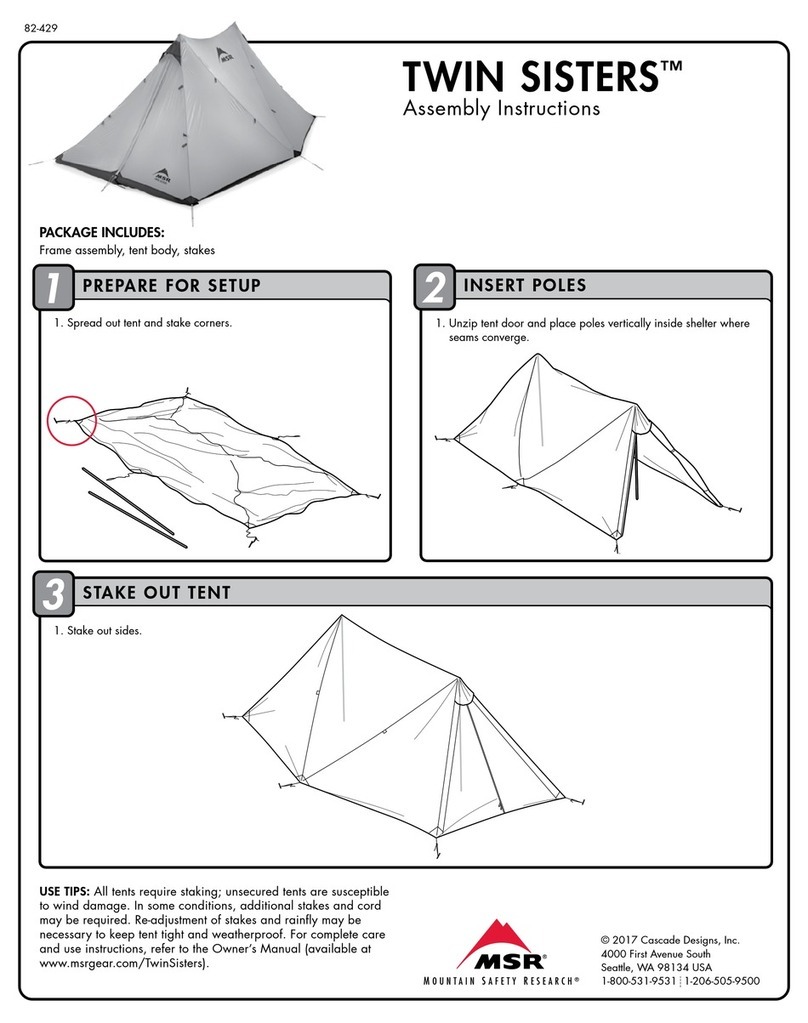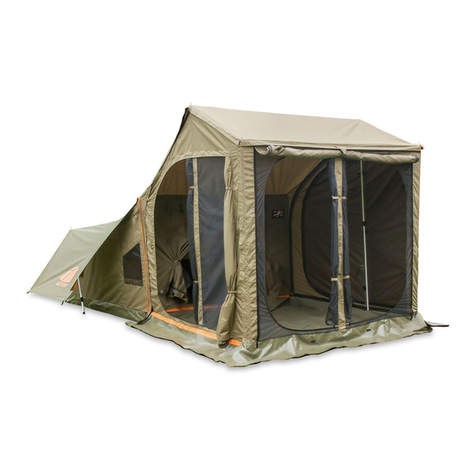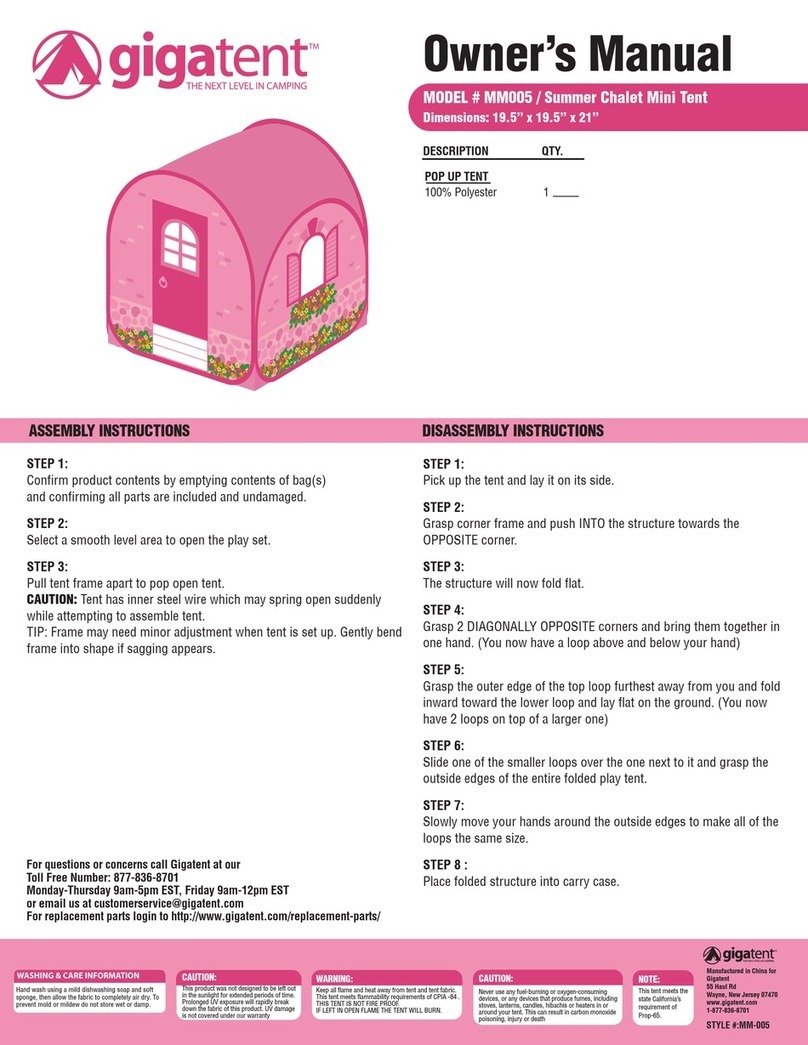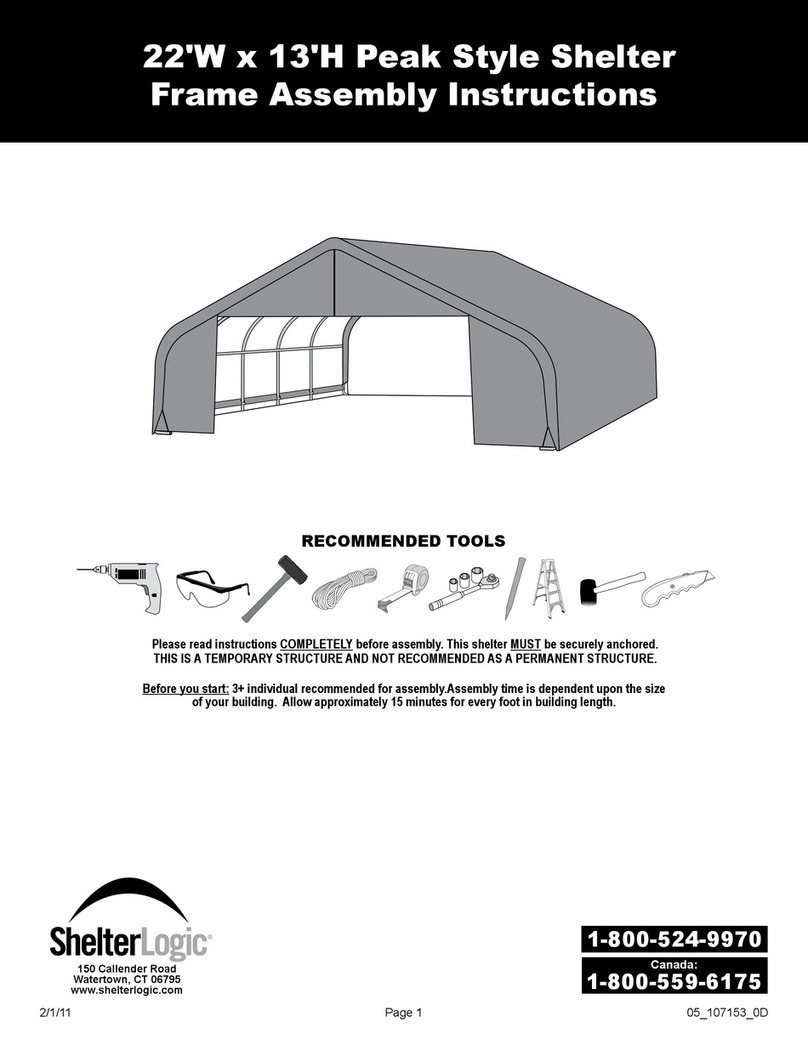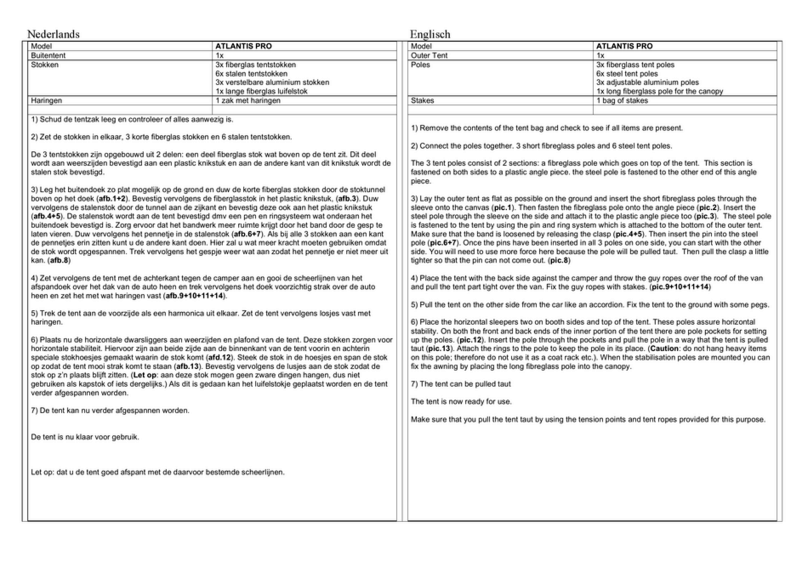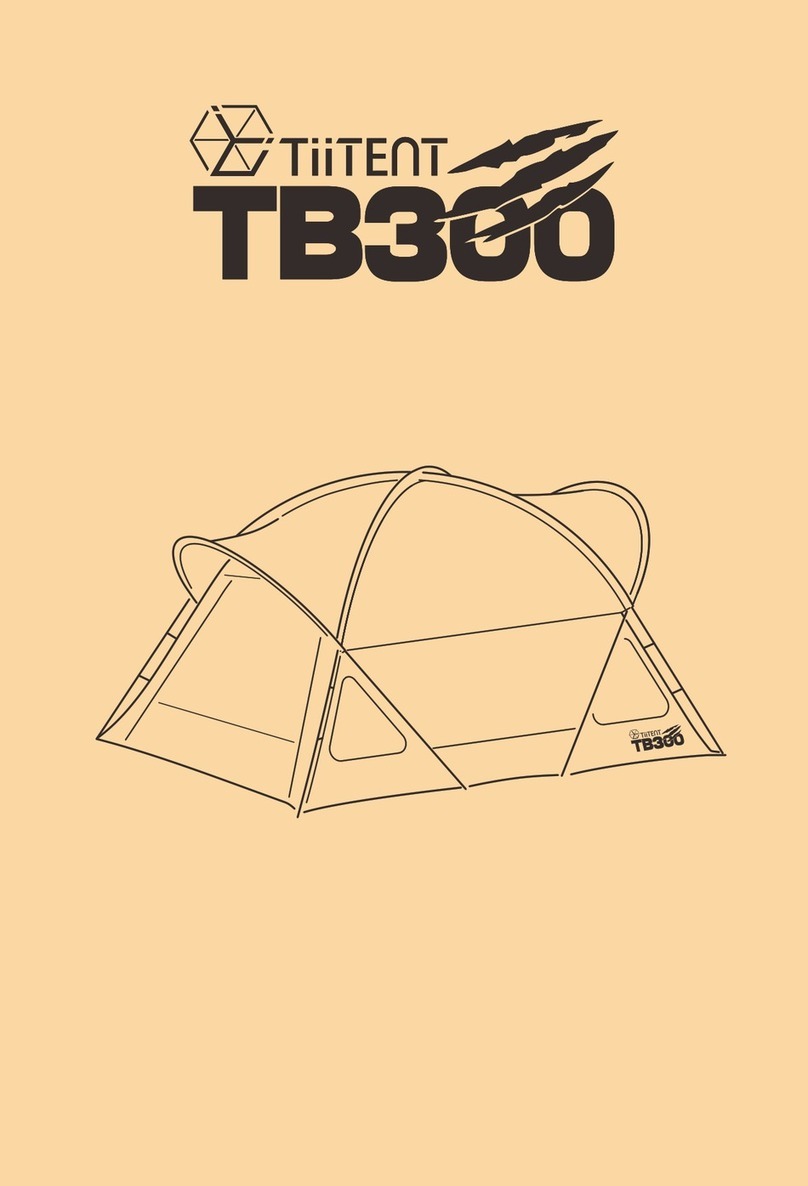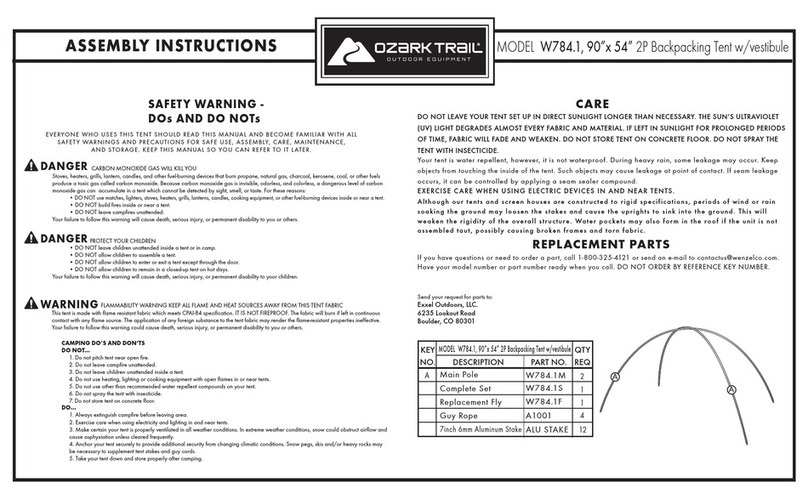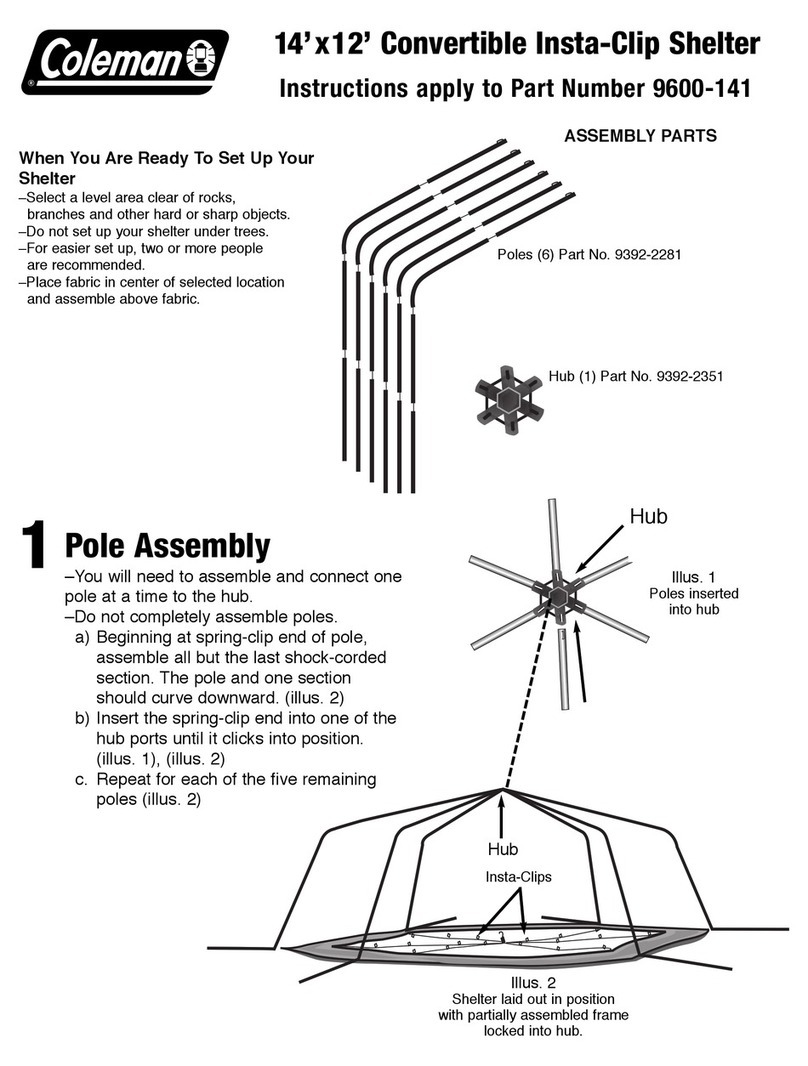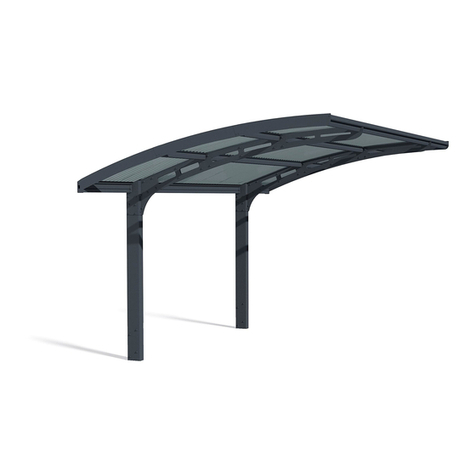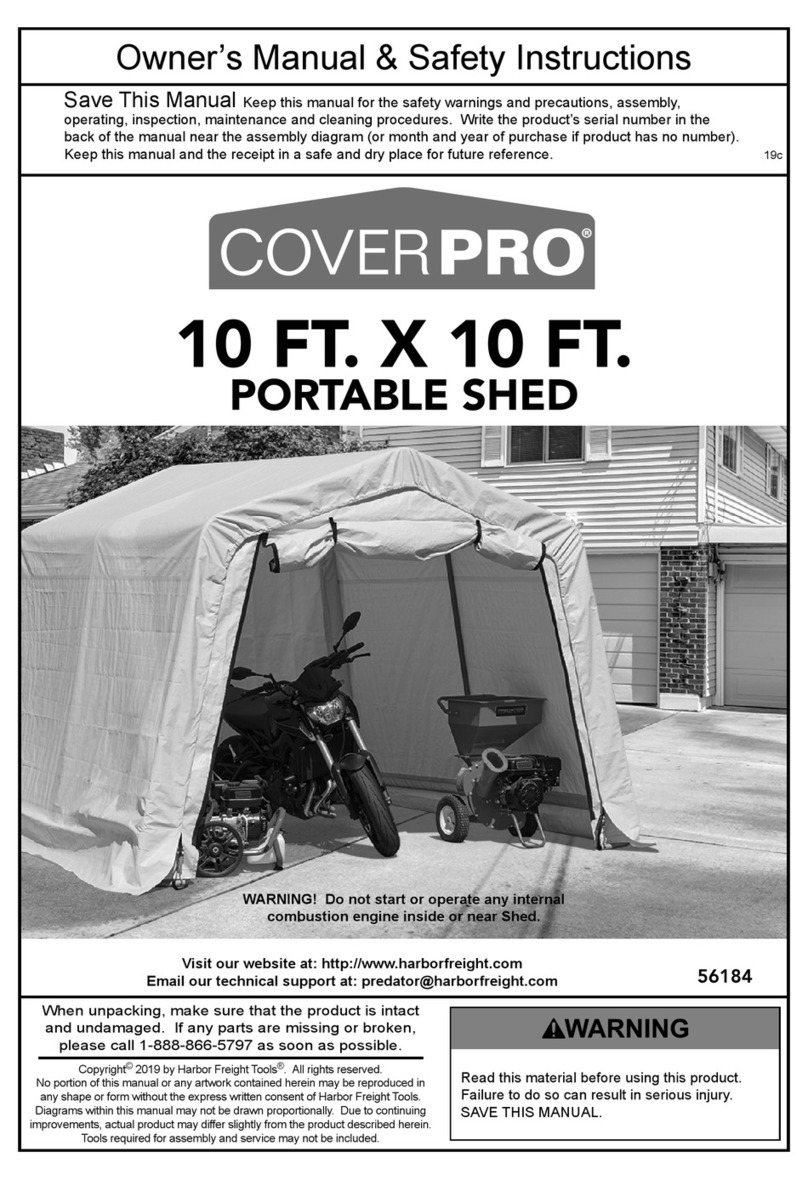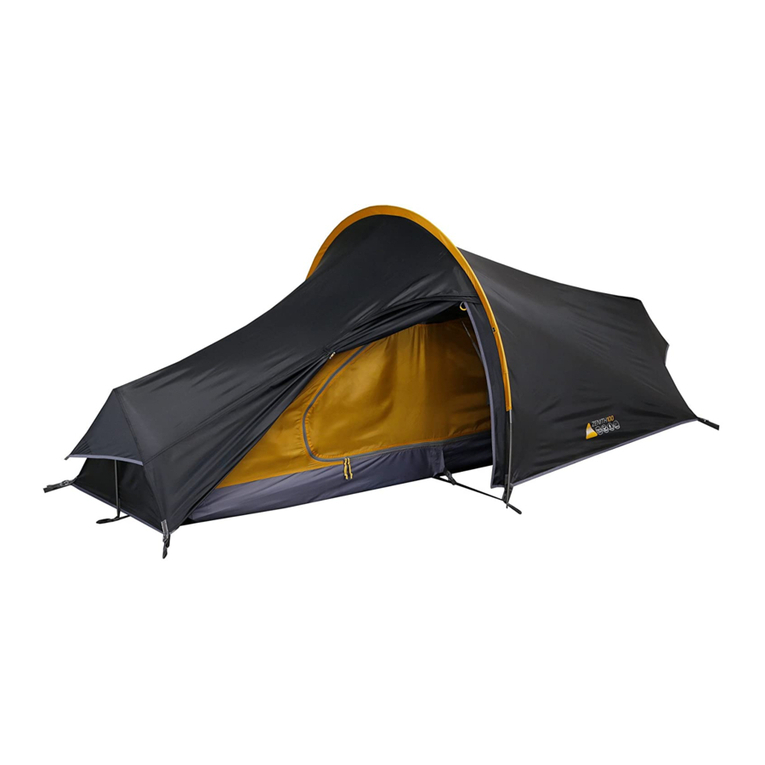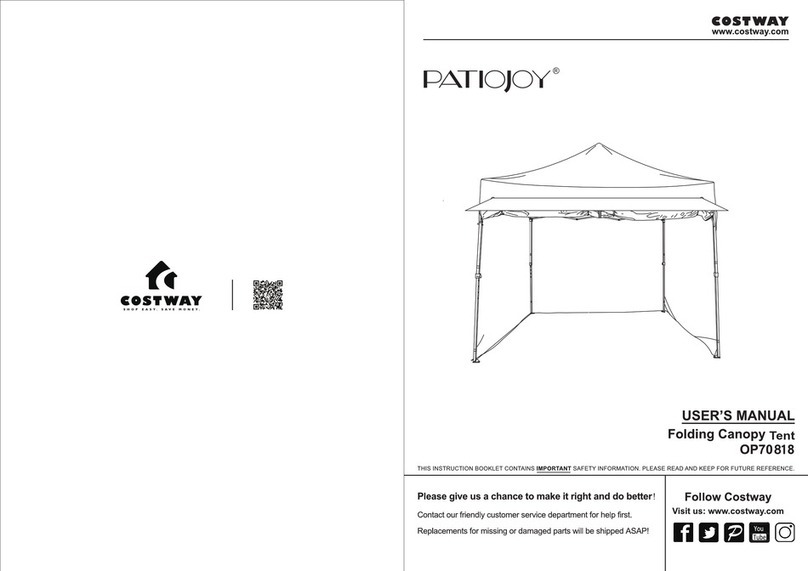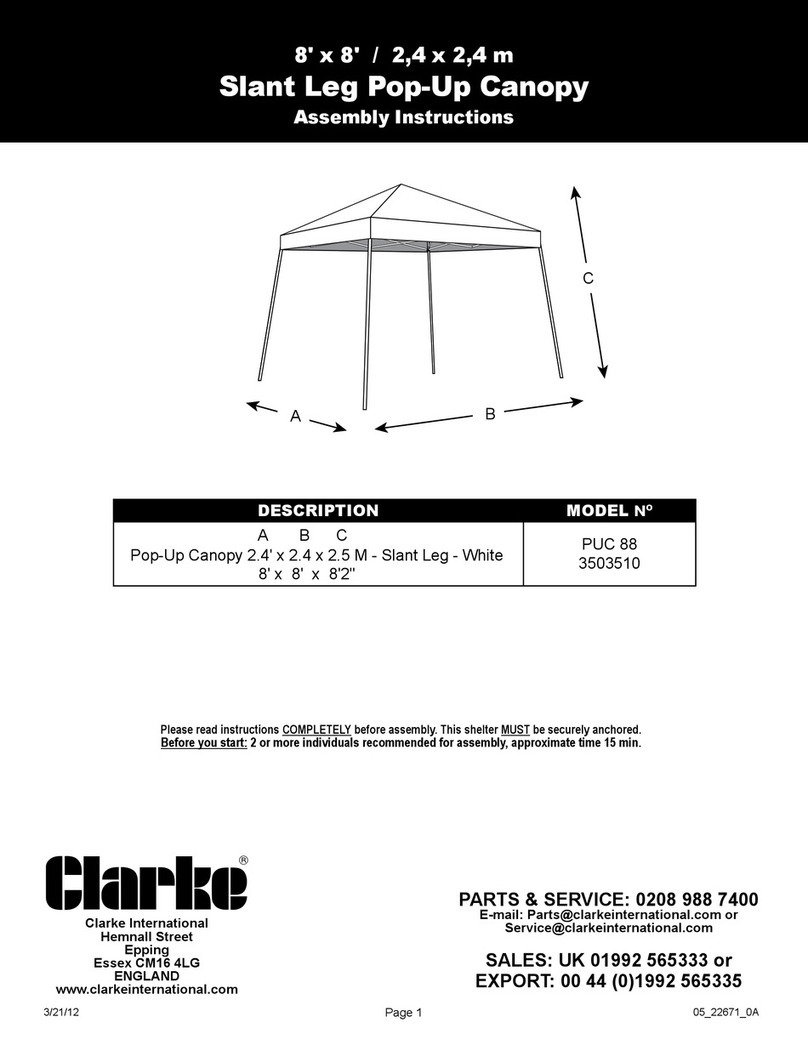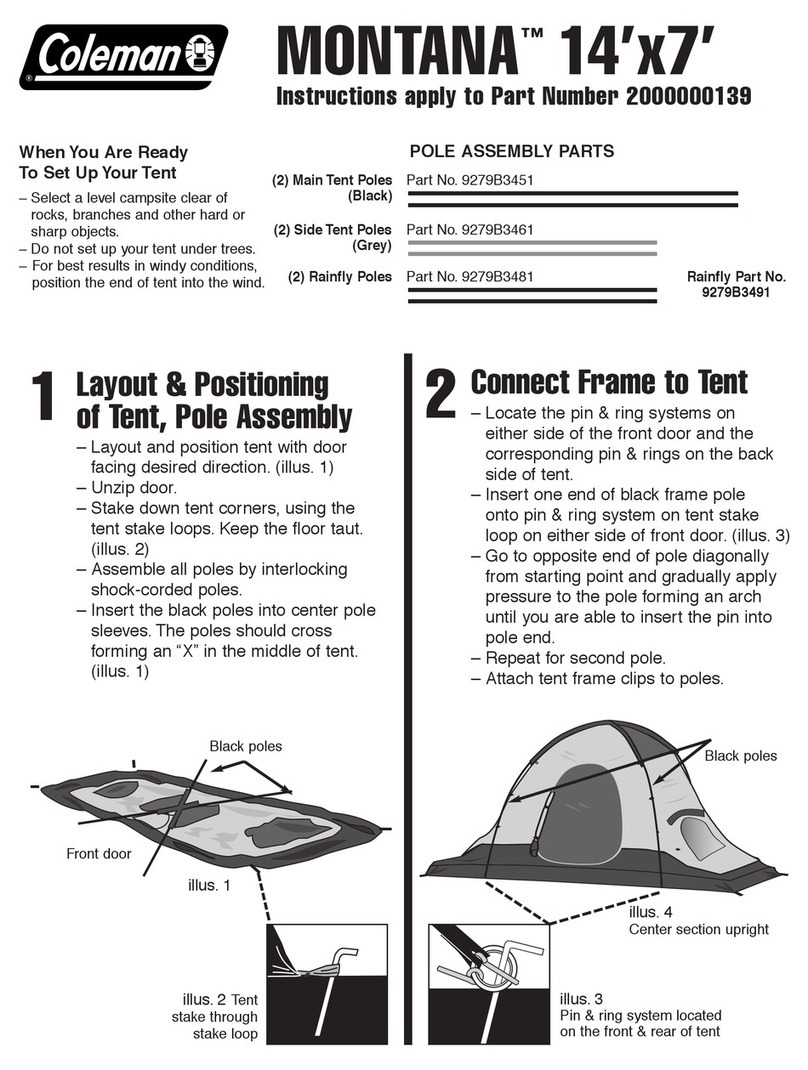
4 5
TENTS AND SHELTERS
Fast & Light
® Tents
Ultralight without Compromises
These featherweight tents, hybrid tarps, and
modular shelters offer maximum livability in
incredibly light packages. Built with spring,
summer, and fall in mind, some of these
tents are also suitable as wintertime shelters
when combined with the right skills and
equipment. However, these tents are not
just for fast and light backpacking. Roomy
interiors, large vestibules, and full-featured
detailing mean these are all-around tents that
just happen to be ultralight.
Hubba™: Freestanding livable
tent and/or tarp shelter for one
person. 3 lbs. (1.3 kg)
Hubba Hubba™: Freestanding
livable tent and/or tarp shelter
for two people. 4 lbs. 2 oz.
(1.8 kg)
Trekker Tent™: Trekking-pole-
supported, “pop-up-style” livable
tent and/or tarp shelter for two
people plus gear. 4 lbs. (1.8 kg)
Missing Link™: Trekking-pole-
supported, vented single-wall
tent shelter for two people, with
awning. 3 lbs. (1.3 kg)
Twin Peaks™: Trekking-pole-
supported full-coverage tarp
shelter for two people.
1 lb. 12 oz. (.8 kg)
Trekker Wing™: Trekking-pole-
supported tarp shelter for two
people plus gear. 1 lb. 12 oz.
(.8 kg)
MicroZoid™: Non-freestanding
sleep tent for one person.
2 lbs. 5 oz. (1.1 kg)
Zoid 1™: Non-freestanding com-
fortable tent for one person.
2 lbs. 14 oz. (1.3 kg)
Zoid 2™: Non-freestanding
roomy tent for two people.
4 lbs. 1 oz. (1.8 kg)
ACCESSORIES AND MAINTENANCE KITS
Maintenance Kits
MicroMesh™ Maintenance
Kit, Fabric Maintenance Kit,
Tent Maintenance Kit, Zipper
Maintenance Kit, Reflective
Zipper Pull Kit
Stake Kits
Summit™ Stake Kit, Ultralight
Needle™ Stake Kit, Blizzard™
Stake Kit, GroundHog™
Stake™ Kit
Cord & Pole Kits
Reflective Cord Kit, Small
Cord Tensioner Kit, Medium
Cord Tensioner Kit, 1’ 9”-5’ 4”
Telescoping Pole
TENTS AND SHELTERS
Wings™
Lightweight, Versatile
Weather Protection
Lightweight and versatile, Wings offer ideal
protection for larger groups from rain, sun,
and wind. Their durable catenary-cut designs
shed water and wind like no other shelters,
ensuring maximum performance in nasty
weather. Combine them with any of our tent
bodies to create the ultimate hot-condition
system, with unbeatable ventilation
and shade.
19’ ParaWing™: Lightweight,
versatile wind, sun, and rain
protection. 5 lbs. 4 oz. (2.4 kg)
OutfitterWing™: Lightweight,
wind, sun, and rain protection
for large groups. 5 lbs. 8 oz.
(2.4 kg)
Pavilion™: Extra-large,
full-coverage group shelter.
13 lbs. 11 oz. (6.2 kg)
All-Season™ Tents
Go-Anywhere, Do-Anything
Technical Tents
Tough enough to handle a mountain storm,
spacious enough for multi-day comfort, and
airy enough for hot summer nights, these
versatile tents are made for the person who
wants one tent that can do it all. Each is
designed with zippered panels that can be
opened or closed for optimal comfort in any
season and any climate.
Fusion 2™: Sturdy two-person
tent with pullout vestibule.
6 lbs. 13 oz. (3.1 kg)
SuperFusion 3™: Roomy three-
person tent with two doors and
large skylight vestibule.
10 lbs. 6 oz. (4.7 kg)
Velo™: Comfortable two-person
tent with two large doors and a
very large vestibule.
8 lbs. 11 oz. (3.9 kg)
Expedition™ Tents
Livable, Dependable
High-Mountain Shelters
Intended to provide maximum protection
and livability in even the harshest conditions,
our Expedition tents are built to withstand
whatever Mother Nature can throw at them.
Terrific for extended camping trips, these
proven all-weather tents are at their best in
winter but suitable for harsh conditions any
time of year.
Fury™: Two-person, one-door,
one-vestibule, extreme-weather
tent. 6 lbs. 12 oz. (3.1 kg)
StormKing™: Four/five-person,
two-door, one-vestibule, extreme-
weather, base-camping tent.
14 lbs. 2 oz. (6.4 kg)
Wind 2™: Integrated double-
wall, two-person, two-door,
two-vestibule, extreme-condition
tent; wind-tunnel rated for
106 mph. 7 lbs. 6 oz. (3.3 kg)
Wind 4™: Integrated double-
wall, four-person, two-door,
two-vestibule, extreme-condition,
base-camping tent.
14 lbs. (6.3 kg)
